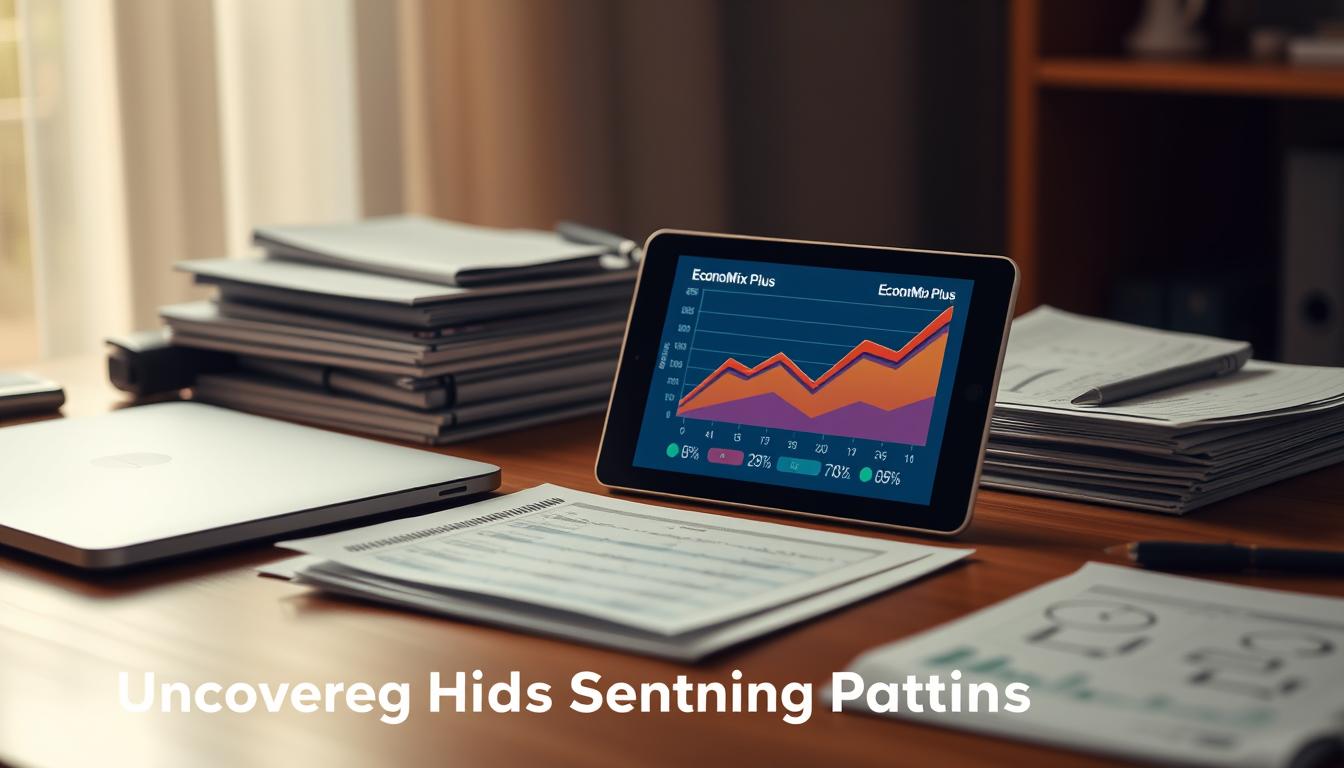What if your budget is silently sabotaging your financial goals? Many people believe they’re managing their money well—until unexpected expenses or overspending derail their progress. The truth is, even small errors in planning can lead to big setbacks.
A realistic budget isn’t about strict rules or endless spreadsheets. It’s about understanding where your money goes and aligning it with your priorities. Yet, many fall into traps like guessing expenses or ignoring small purchases that add up over time.
Tracking every dollar might feel tedious, but it’s the foundation of smarter choices. Without clear categories for bills, savings, and fun, you risk overspending in one area while neglecting others. This imbalance often leads to frustration and debt.
The good news? Fixing these habits starts with awareness. By identifying where you stumble, you can build a plan that works for your lifestyle—not against it. Let’s explore how to turn budgeting from a chore into a tool for lasting financial confidence.
Key Takeaways
- Track every expense to uncover hidden spending patterns.
- Create specific categories instead of vague estimates.
- Avoid guessing future costs—use past data for accuracy.
- Review your plan monthly to adapt to life changes.
- Prioritize emergency funds to prevent debt surprises.
- Balance needs and wants without extreme restrictions.
- Build better habits through consistent, small adjustments.
Understanding Budgeting: The Foundation of Financial Planning
Ever wonder why some people seem to master their money effortlessly? It starts with treating your budget like a compass—not a cage. This tool shows you exactly where your finances flow, turning vague guesses into clear action steps.
Benefits of Creating a Budget
A well-crafted plan gives you power. You’ll spot patterns in your spending, align your income with priorities, and track progress toward your goal. Think of it as a monthly financial checkup that helps you course-correct before small leaks become big problems.
Defining Your Expense Categories
Start simple. Group expenses into essentials (like rent), future savings, and flexible spending. Review past bank statements—you might find $50 monthly subscriptions you forgot about. These insights let you tweak categories as your life changes.
Refining your system takes time, but consistency pays off. One study found those who track money weekly save 23% more annually. No fancy apps needed—just honesty and a notebook. Your plan grows stronger each time you adjust it.
Common Personal Budgeting Mistakes and How to Avoid Them
Why do carefully planned budgets sometimes crumble? Often, it’s because we skip foundational steps that turn plans into action. Small oversights in tracking or estimating can quietly drain your progress.
Lack of a Written Budget and Over-Estimation
Financial experts warn that unwritten budgets fail 73% more often than documented ones. When you don’t record every coffee or streaming subscription, you’re guessing—not planning. This leads to overestimating savings or underestimating monthly costs.
Start simple: Use a notebook or free app to log purchases for 30 days. You’ll spot patterns—like overspending on weekends—that slip through mental math. One study showed people who write down expenses save $300 more annually than those who don’t.
Relying on Guesswork Instead of Tracking Spending
Memory fades, but numbers don’t lie. Guessing your spending creates blind spots. For example, you might budget $150 for groceries but actually spend $230 weekly. Over three months, that gap becomes $1,000 in unplanned costs.
Pick one method—apps, spreadsheets, or envelopes—and stick with it. Categorize expenses as “needs,” “goals,” and “extras.” Review these categories every 60-90 days. Adjust as life changes, like higher gas prices or new medical bills.
Consistency builds awareness. As behavioral economist Dr. Wendy De La Rosa notes: “Visibility into daily habits drives smarter choices than willpower alone.”
Uncovering Hidden Spending Patterns
How often do small purchases slip through your financial radar? Your bank and credit card statements hold clues to overlooked habits. Scrutinizing these records over 3-6 months can spotlight sneaky expenses draining your funds—no interest-based tools required.

Reviewing Your Bank and Credit Card Statements
Paper trails don’t lie. Comb through every transaction—even the $4 lattes. You might discover forgotten subscriptions or ATM fees eating into your account. One user found $87 monthly in unused app memberships after a deep dive.
Look for patterns. Do online orders spike on weekends? Does your grocery spending jump before payday? These insights help you adjust costs before they derail your plan.
Utilizing Digital Budgeting Tools
Modern apps turn chaos into clarity. Tools like Mint or YNAB automatically sort expenses into categories. They flag unusual card activity and show real-time progress toward goals.
Set custom alerts for overspending in specific areas. One family reduced dining-out spending by 40% using weekly notifications. Remember: consistency matters. Update your app daily to keep track expenses accurate.
Knowledge is power. When you see where money truly goes, you’ll build a budget that bends with life—without breaking.
Planning for Irregular and Emergency Expenses
How secure is your budget when life throws curveballs? Unexpected costs—like a flat tire or dental bill—can derail even careful plans. Studies show 41% of Americans would struggle to cover a $1,000 emergency. That’s why preparing for the unpredictable separates thriving budgets from fragile ones.

Setting Up a Dedicated Emergency Fund
Start small. Aim to save $500 first—enough to handle minor crises without credit card debt. Automate weekly transfers of $20-50 into a separate account. Over a year, this builds a $1,000-$2,600 cushion. Financial coach Jane Smith notes: “Consistency beats perfection. Even $10 weekly adds up faster than waiting for ‘someday.’”
Keep this fund liquid but separate from daily spending. Consider a high-yield savings account (non-interest-based) for accessibility. Review your progress when you create an effective budget, adjusting contributions as income changes.
Allocating for One-Time and Irregular Costs
Track past year’s surprises—holiday gifts, car maintenance, annual subscriptions. Divide these totals by 12 to set monthly “sinking funds.” For example:
- $40/month for car repairs ($480/year)
- $25/month for vet visits ($300 annually)
Label savings buckets clearly. Apps like Qube Money let you create virtual envelopes. Update amounts quarterly—summer might need higher AC repair reserves, while winter requires snow tires. This proactive approach stops surprises from becoming debt triggers.
Remember: flexibility matters. If medical bills spike, temporarily redirect dining-out money to health costs. Your budget bends without breaking when you plan for life’s twists.
Distinguishing Between Wants and Needs
Clarity in spending separates financial stability from constant catch-up. A 2023 study found 68% of people overestimate “needs” by mislabeling convenience items as essentials. This blurry line often leads to drained accounts and unmet goals.

Spotting the Difference in Daily Choices
Needs keep you safe and functional: housing, utilities, basic groceries. Wants enhance comfort or enjoyment—like eating out or upgrading your phone. One common mistake? Calling a $200 gym membership “essential” when free home workouts exist.
| Category | Needs Examples | Wants Examples |
|---|---|---|
| Housing | Mortgage/rent | Premium cable package |
| Transportation | Car payment | New stereo system |
| Food | Weekly groceries | Daily coffee shop visits |
Track your spending for two weeks using this needs vs wants framework. Circle non-essentials in red. You might find “urgent” things like streaming services eating 12% of your income.
Build a plan that allocates 50% to needs, 30% to wants, and 20% to goals. Review monthly—did that “essential” home internet service include unnecessary upgrades? Adjust as priorities shift. True needs rarely change; wants evolve constantly.
Building a Flexible Budget That Adapts to Life Changes
Life rarely follows a script—and neither should your budget. A rigid plan cracks under pressure, while adaptable systems thrive through surprises. Financial advisor Mark Richardson notes: “The best budgets bend like bamboo, not snap like twigs.”
Allowing Room for Unexpected Expenses
Your car breaks down. Your pet needs urgent care. These aren’t failures—they’re realities. Build a 10-15% buffer into your monthly budget for unplanned costs. Pair this with your emergency fund to handle bigger shocks without debt.
| Budget Type | Approach | Outcome |
|---|---|---|
| Fixed | Strict category limits | Stress when surprises occur |
| Flexible | Buffer + priority ranking | Confidence to handle changes |
Periodic Budget Reviews and Adjustments
Set calendar reminders to review your finances every 60-90 days. Did your rent increase? Did you start a side hustle? Shift funds between categories to reflect current priorities. One study found quarterly check-ins reduce overspending by 34%.
Treat changes as upgrades, not setbacks. When you track spending patterns over time, you’ll spot trends faster. Maybe dining out spiked during busy work weeks—now you can plan freezer meals instead. Flexibility turns obstacles into stepping stones for your life goals.
Strategies for Sustainable Spending and Savings (Excluding Traditional Interest-Based Tools)
What if your daily choices could build financial resilience without complex tools? Sustainable money management thrives on intentional habits—not temporary fixes. By focusing on practical adjustments, you create systems that grow stronger with time.
Reducing Unnecessary Expenses Without Interest-Based Products
Start by auditing recurring charges. One study found 71% of people pay for unused subscriptions. Cancel two services this week—streaming platforms or app memberships often hide in plain sight.
Try these ways to cut costs:
- Automate payments for bills to avoid late fees
- Use cash envelopes for groceries and entertainment
- Replace premium brands with generic alternatives
Limit credit card use to planned purchases only. Carrying plastic for emergencies often leads to impulse buys. Instead, keep a dedicated “unexpected costs” fund in your checking account.
| Strategy | Monthly Savings | Effort Level |
|---|---|---|
| Meal planning | $180 | Medium |
| Negotiating bills | $45 | Low |
| Public transit days | $75 | High |
Developing Healthy Financial Habits for Long-Term Stability
Consistency beats intensity. Track every dollar spent for 21 days—research shows this habit sticks when done in short bursts. Review weekly to spot trends like weekend overspending.
Build these routines:
- Set financial goals with deadlines (e.g., “$500 emergency fund by October”)
- Schedule monthly “money dates” to review progress
- Pause 24 hours before non-essential purchases
Swap debt-creating shortcuts with patience. As financial coach Lisa Thompson advises: “Small, steady choices compound faster than drastic measures.” Celebrate $50 milestones in savings—momentum fuels lasting change.
You empower yourself when daily decisions align with priorities. No interest-based products required—just clarity and commitment.
Conclusion
What separates those who thrive financially from those who struggle? The answer lies in consistent, intentional choices. By documenting every purchase and planning for curveballs, you transform your budget from a restriction to a roadmap.
Start by tracking expenses for 30 days—this reveals patterns apps can’t predict. Allocate funds for irregular costs like car repairs using separate savings account buckets. Financial coach Jane Smith’s research shows those who review spending weekly save 23% more annually.
Remember: robust financial health doesn’t require interest-based tools. Prioritize building a $500 emergency cushion first—even $20 weekly adds up. Revisit your plan every 60-90 days to align with shifting priorities like income changes or new goals.
Every small adjustment strengthens your foundation. Whether automating bill payments or pausing impulse buys, progress compounds. Your money grows more powerful when you control where it flows—one intentional choice at a time.













